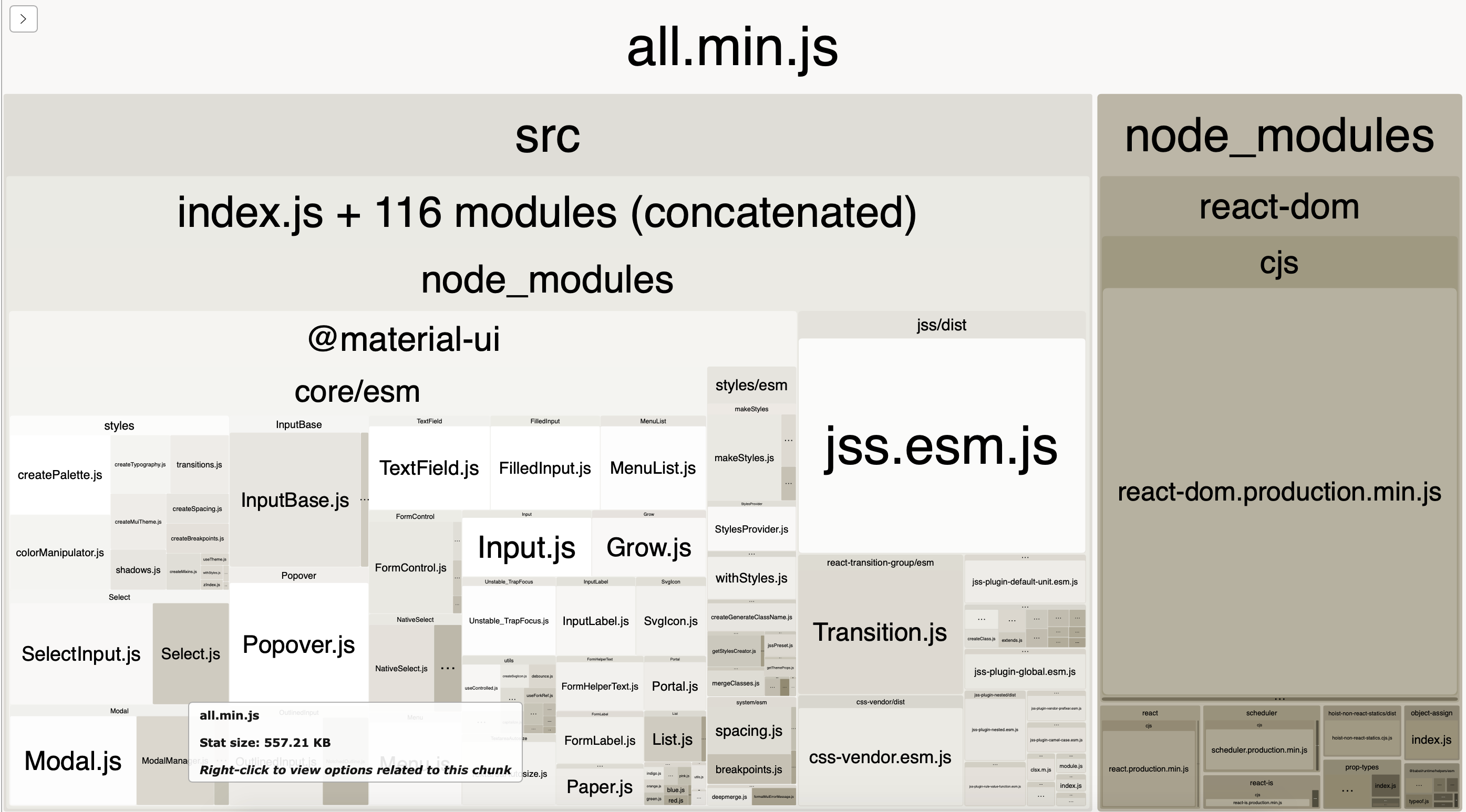That looks fine to me. It's more of an issue with how overloaded the TextField is. It currently includes the Select component which requires the Popover, Modal, List etc.
Tree-shaking is working or otherwise you'd see a lot more components. You can verify this by just importing the Button.

Minimum example of React Material-UI with the only TextField component imported - result bundle size is 250Kb!
https://github.com/pqr/react-mui-treeshake-does-not-work
webpack-bundle-analyzer shows everything is imported, nothing is tree shaked.
According to documentation https://material-ui.com/guides/minimizing-bundle-size/ tree-shaking should work, quote:
But as shown in this minimum example it does not work out of the box. I did several experiments, read through issues and StackOverflow and failed to find a solution.
Current Behavior 😯
Bundle size of minimum app with the only TextField imported is about 250Kb, everything is included into bundle (analized with webpack-bundle-analyzer
Expected Behavior 🤔
Bundle should not contain any code not related to the only imported TextField, tree shake to be working
Steps to Reproduce 🕹
Your Environment 🌎